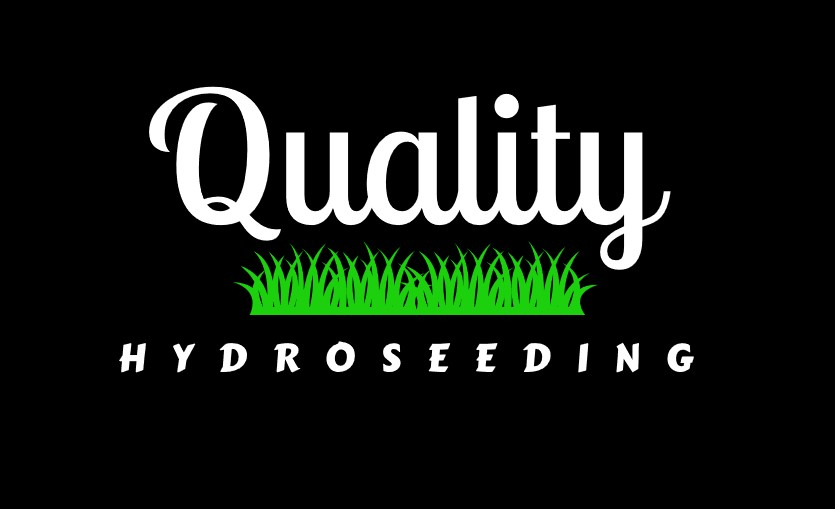
Hydroseeding
Typically, the cost and benefits of the process is the reason Hydroseeding is becoming the most popular way to plant a new lawn.
Traditional dry seeding consists of a multi-step process with repetitive labor which tends to drive up the cost, ultimately costing approximately the same amount as hydroseeding.
The cost of sod is approximately three times the cost of hydroseeding. Then add the labor required to lay the sod down and you’re looking at sod costing upwards of $2 per square foot or more!
Hydroseeding is a one-step process of applying a slurry of water, seed, fertilizer and mulch onto an already prepared soil surface. But there’s so much more.
Click right to see.

Why Hydroseed?
Hydroseeding works quickly by design.
The slurry, primarily consisting of the seed, fertilizer and industry-specific fiber mulch, allows for a smooth one-step application which reduces labor costs associated with the multiple steps of dry seeding or the intense labor of laying down layers of sod.
For seed to germinate and grow strong it needs warmth during the day, cool nights and continued exposure to moisture. By mixing the seed in the water based slurry, hydroseeding activates the germination process before the seed hits the soil. Depending on seed variety, and with proper care, you can see germination as early as 5-14 days and have a full, immature turf in a matter of 4-8 weeks!
The mulch component serves a few purposes.
- It absorbs the much needed water which reduces watering requirements compared to traditional dry seeding and sod.
- It’s weight reduces (and in most cases, eliminates) rain run-off of newly placed fertilizer and seed.
- It serves as an insulator, both protecting the seed from sun bleaching which kills seed and by retaining all the warmth the sun provides.
- It protects the seed from birds and other animals that see your seed as a snack which would otherwise leave your lawn with bare spots.
- Unlike the last step straw application with dry seeding, applying wood fiber mulch doesn’t get dusty, doesn’t need to be removed after germination and most importantly, DOES NOT contain any weed seeds.
- The 100% wood fiber mulch applied by Quality Hydroseeding naturally breaks down over time to provide your grass and soil with natural micronutrients that the immature grass needs to feed upon.
Click right to see which planting season works for you.
When to Hydroseed?
It’s said that Autumn is the best time to grow grass, and it’s true. Here in the Northeast the warm days and cool nights between late August and October are the perfect conditions for germination. That, mixed with the fact that airborne weed seeds are at a minimum, gives your seed the best opportunity for establishment. The only downside is the window of opportunity for growth is short. Regular frost approaches quick after October and you need to make sure your new lawn establishes strong roots to weather the winter.
To maximize whole grass growth, our Quality Hydroseeding Fall mix contains a balanced 10-10-10 fertilizer.
The spring is the second best time to hydroseed. After the ground is thawed, somewhere around the second week of April, is a good time to get that new lawn seeded. This is also a good time to start combating annual crabgrass that, whether you know it or not, has already naturally seeded onto your fresh loam.
Included in our Quality Hydroseeding Spring mix is a nitrogen rich starter fertilizer with slow-release technology allowing for 8 weeks of feeding! A pre-emergent inhibitor is also included to kill the weed seeds already present and create a protective barrier against weeds that have yet to come.
The intense overhead sun, warm nights and low rainfall of summer don’t give the best conditions for new seed growth, but it can still be done if your schedule demands it. Just expect an increase in watering needs. The same pre-emergent inhibitor is included in our summer starter fertilizer.
Click right to see where hydroseed can be applied.
Where to Hydroseed?
Quality Hydroseeding can apply a slurry in just about any application to meet your specific needs.
- New Residential or Commercial Lawns
- Septic Construction Repair
- Utility Construction Repair
- Hillside Erosion Control
- Solar Farms
- Athletic Fields
- Landfill Caps
- Roadside Contruction Finishing
- Park Repair
- Feed Grasses for Pastures
- Wildflower Mixes for Fields
- Indigenous Variety Blends for Watershed Reclaimation
